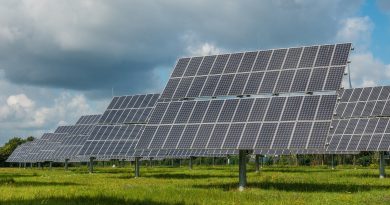Government Incentives for Solar Installations in 2025
As the demand for clean energy continues to rise, more Indian households and businesses are turning to solar installation as a smart and sustainable solution. However, the initial cost of a solar panel installation can be a hurdle for many. That’s where Government Incentives for Solar Installations step in. These benefits significantly reduce upfront expenses and promote the widespread adoption of solar energy. This blog will guide you through the latest incentive schemes, how to apply, and how to choose the best solar panel for home in 2025.
Table of Contents
- 1 Why Solar Power Is Gaining Popularity
- 2 Types of Government Incentives in India
- 3 Eligibility Criteria for Solar Subsidies
- 4 Step-by-Step Guide to Apply for Subsidies
- 5 Other Financial Benefits
- 6 How to Choose the Best Solar Panel for Home
- 7 Common Mistakes to Avoid
- 8 Real-Life Example: A Success Story
- 9 What’s New in 2025?
- 10 Frequently Asked Questions (FAQs)
- 11 Conclusion
Why Solar Power Is Gaining Popularity
Lower Electricity Bills
Once your solar power system is set up, you start generating your own electricity and reduce dependence on the grid. Over time, this leads to significant savings.
Environmentally Friendly
Switching to a solar panel helps reduce carbon emissions and supports India’s mission toward a greener future.
Increased Property Value
Homes equipped with a solar panel for home often have higher property value due to their energy efficiency and reduced monthly costs.
Types of Government Incentives in India
Central Government Subsidies
The Ministry of New and Renewable Energy (MNRE) provides financial support through the Rooftop Solar Programme Phase II. As of 2025, you can get up to 40% subsidy on residential rooftop solar installation up to 3 kW, and 20% for systems between 3 kW and 10 kW.
State-Specific Schemes
Several states offer additional incentives. For example:
-
Gujarat and Rajasthan offer performance-based incentives.
-
Tamil Nadu has a separate capital subsidy scheme.
-
Maharashtra supports interest-free loans and faster net metering approvals.
Always check your state’s energy development agency website for updates.
Net Metering Benefits
With net metering, you can sell excess power generated by your solar power system back to the grid. This helps offset monthly electricity bills and sometimes even results in a credit balance.
Eligibility Criteria for Solar Subsidies

To qualify for government incentives, you must:
-
Use solar panels and components that are approved by MNRE.
-
Hire a certified vendor for solar panel installation.
-
Ensure the system is grid-connected.
-
Submit necessary documents to your local DISCOM or agency.
Step-by-Step Guide to Apply for Subsidies
-
Register at the National Portal for Rooftop Solar
-
Upload required documents: ID proof, electricity bill, property papers, etc.
-
Choose an MNRE-approved vendor.
-
Complete the installation and inspection.
-
Subsidy is disbursed directly into your bank account.
Other Financial Benefits
Income Tax Depreciation (for businesses)
Businesses investing in a solar panel installation can claim accelerated depreciation, reducing taxable income.
GST Benefits
Under current policies, solar equipment is taxed at a lower GST rate (currently 5%), making solar installation more affordable.
Bank Loans and EMI Options
Many public and private banks now offer green loans with low interest rates for solar power system installations. EMI options make it easier to manage payments over time.
How to Choose the Best Solar Panel for Home
Choosing the best solar panel for home depends on various factors:
-
Efficiency: Go for higher-efficiency models to maximize output.
-
Brand reliability: Trusted brands offer better warranties and after-sales service.
-
Warranty: Look for at least a 25-year performance warranty.
-
Roof size and sunlight availability: The right setup depends on daily sun exposure.
For expert help, explore options at https://solarclue.com.
Common Mistakes to Avoid
-
Opting for unapproved vendors (ineligibility for subsidy).
-
Delaying paperwork or missing deadlines.
-
Installing off-grid systems that do not qualify for subsidies.
-
Underestimating power needs and installing undersized systems.
Real-Life Example: A Success Story
The Verma family from Bengaluru installed a 5 kW rooftop solar power system and saved ₹40,000 in electricity bills within the first year. Thanks to Government Incentives for Solar Installations, they received a ₹55,000 subsidy, making their return on investment even faster.
For more case studies and solar news, visit: https://blog.solarclue.com
What’s New in 2025?
-
Increased funding in the Union Budget for rooftop solar adoption.
-
DISCOMs are now required to process net metering applications within 15 days.
-
Expansion of the KUSUM scheme for farmers installing solar pumps.
Frequently Asked Questions (FAQs)
1. Can I avail both central and state-level subsidies?
Yes, depending on your state’s alignment with MNRE. In most cases, subsidies are coordinated through a single application process.
2. Are these incentives available for commercial installations?
While residential systems benefit most, businesses can claim tax depreciation and GST credits.
3. How long does the subsidy process take?
Typically, 30 to 90 days post-installation and verification by authorities.
4. Can tenants apply for solar subsidies?
Only property owners or those with lease agreements granting installation rights can apply.
5. Do these incentives apply to off-grid solar systems?
No, most subsidies are only for grid-connected rooftop systems.
Conclusion
If you’ve been thinking about going solar, now is the time. The Government Incentives for Solar Installations in 2025 make it incredibly cost-effective to switch to clean energy. Whether you’re installing a solar panel for home or setting up a full solar power system, government schemes are designed to ease your financial burden and speed up your return on investment. Just make sure to go with MNRE-approved vendors and follow the proper steps.
For personalized advice and to find the best solar panel for home, visit https://solarclue.com. You can also read more helpful guides at https://blog.solarclue.com.
Let the sun light up your savings—visit SolarClue today and power your future the smarter way!




